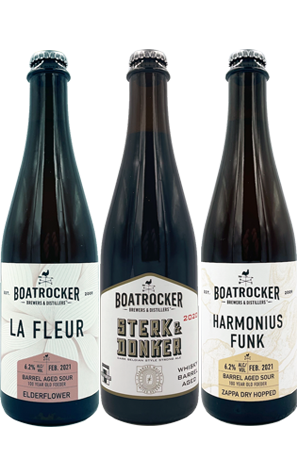When you've got barrels of all origins, ages and sizes to play with, why wouldn't you do just that? And when you have a particular fondness for brewing Flanders red styles, why not use them as your muse?
Such is the diversified nature of the beer world these days, brewers are finding ways to showcase the ways in which changing one ingredient or one process can significantly alter the liquid (see Hawkers' Alter Ego IPAs released around the same time as this duo, for example). Here, Boatrocker's brewers set out to make use of two similar yet distinct first use barrels from the US: one previously housed Jack Daniel's, the other Buffalo Trace, and into both was poured a Flanders red style ale that had already spent around two years in French oak.
In the case of the Tennessee Red, it seems like the three months in ex-Jack barrels didn't cause too much deviation in the base beer's evolution (he says having not tasted it before that three month finishing period). There's more sweet spiciness to taste than I recall from past Boatrocker reds of this ilk, but otherwise it remains a beer in keeping with the Flanders reds the Braeside brewery have been refining over the years.
With Kentucky Red, however, it's fair to say the Buffalo Trace most definitely leaves a trace. It's as if a fire blanket has been dropped over those lively upfront acids, instead bringing a nougat like creaminess, some charred oak / leather and a souring whiff too. The potent red underneath can’t be tamed for long, however. As soon as you’ve taken a swig, your palate is brought to life by a beer that if anything is more structured than its companion: there's a more distinct carbonation and acidity holding the sweetness in check, a longer-lasting head and firmer texture too.
One base beer, two barrels of similar origin, one process, two quite different beers. And for this writer, it's the Buffalo Trace that delivers the more rewarding experience.
James Smith
Published February 14, 2022 2022-02-14 00:00:00

































